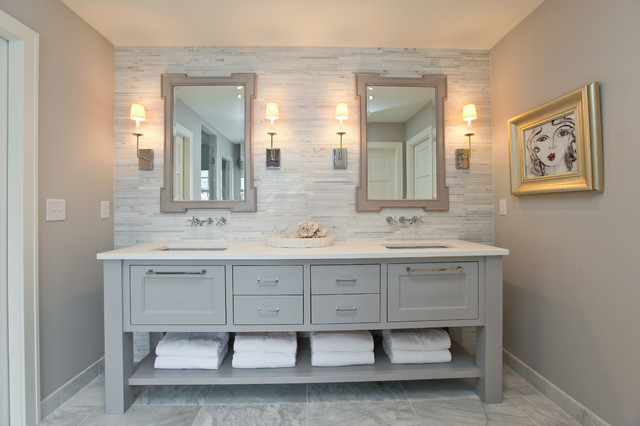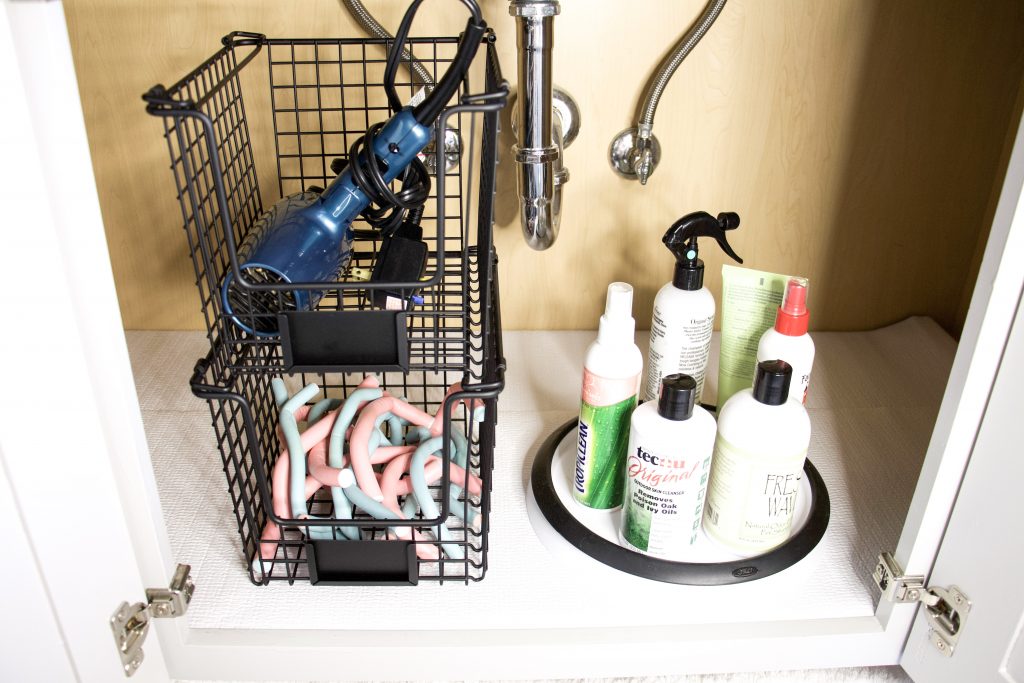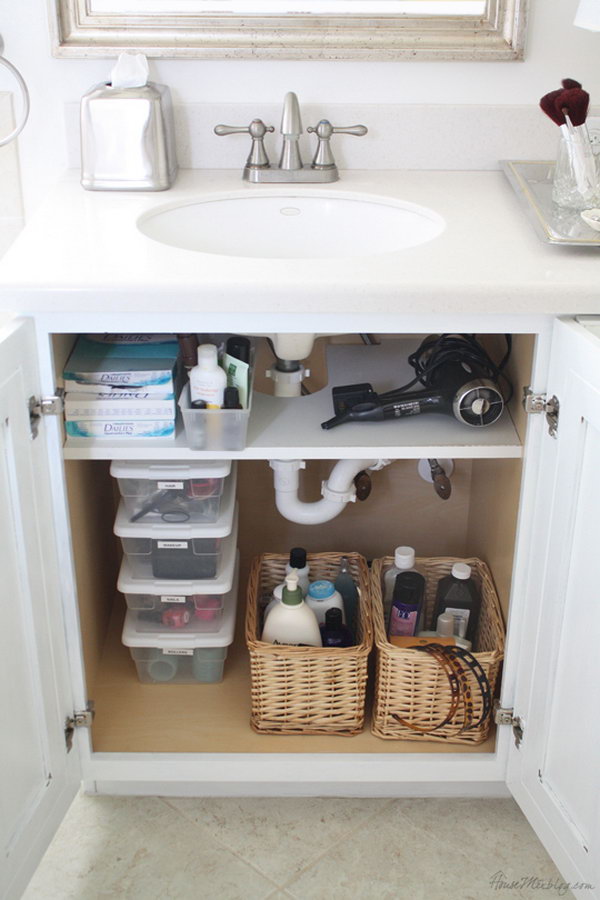If you're renovating your bathroom or just looking to make some upgrades, you may be wondering whether or not you should tile under your bathroom sink. While it may seem like an unnecessary step, there are actually several reasons why you should consider tiling under your bathroom sink. From practical benefits to aesthetic appeal, here are the top 10 reasons why you should tile under your bathroom sink.Why You Should Tile Under Your Bathroom Sink
The short answer is yes, you should tile under your bathroom sink. This is especially important if you have a vanity or cabinet underneath your sink. Tiling the area will not only protect your floors from any potential water damage, but it also creates a more cohesive and finished look. Imagine a beautifully tiled bathroom floor and then a bare patch of flooring under your sink - it just doesn't look right.Tile Under Bathroom Sink: Yes or No?
Aside from the obvious aesthetic benefits, tiling under your bathroom sink also has practical advantages. One of the biggest benefits is that it helps to prevent water damage. This is especially important in a bathroom where there is constant exposure to water. If there are any leaks or spills, the tile will provide a barrier and protect your floors from damage. Another benefit is that it maximizes space. By tiling under your bathroom sink, you are essentially extending the tiled area and making the most out of your bathroom floor space. This is especially helpful in smaller bathrooms where every inch counts.Benefits of Tiling Under a Bathroom Sink
Tiling under a bathroom sink is a fairly straightforward process, but it does require some basic knowledge and skills. First, you will need to remove the sink and any other obstructions such as a vanity or cabinet. Then, you will need to prep the subfloor by removing any debris and making sure it is level and smooth. Next, you will need to measure and cut the tiles to fit the area. It is important to use waterproof adhesive and grout for the best results. Once the tiles are in place and the grout has dried, you can re-install the sink and any other fixtures. It is recommended to seek professional help if you are not confident in your tiling abilities.How to Tile Under a Bathroom Sink
As mentioned before, tiling under your bathroom sink can help to maximize space in your bathroom. This is especially important in smaller bathrooms where every inch counts. By extending the tiled area, you can create a more open and spacious look. This is also helpful for cleaning as you won't have to worry about any hard-to-reach areas under the sink.Maximizing Space: Tiling Under a Bathroom Sink
Water damage is a common problem in bathrooms, especially in areas where there is constant exposure to water. By tiling under your bathroom sink, you are adding an extra layer of protection to your floors. This can save you from costly repairs in the future and give you peace of mind knowing that your floors are well-protected.Preventing Water Damage: Tiling Under a Bathroom Sink
If you are feeling adventurous and want to tackle tiling under your bathroom sink on your own, here is a quick guide to help you get started: Step 1: Remove the sink and any other obstructions Step 2: Prep the subfloor by removing any debris and making sure it is level and smooth Step 3: Measure and cut the tiles to fit the area Step 4: Apply waterproof adhesive and lay the tiles in place Step 5: Let the adhesive dry completely Step 6: Apply grout and let it dry according to the manufacturer's instructions Step 7: Re-install the sink and any other fixturesDIY Guide: Tiling Under a Bathroom Sink
When it comes to choosing the right tiles for under your bathroom sink, there are a few factors to consider. First, make sure to choose tiles that are water-resistant and easy to clean. You may also want to consider the style and color of the tiles to ensure they complement the rest of your bathroom decor. It is also important to choose durable tiles that can withstand the weight of a sink and any other items you may have on top of the vanity or cabinet. Porcelain and ceramic tiles are popular choices for bathroom floors as they are both durable and water-resistant.Choosing the Right Tiles for Under Your Bathroom Sink
Deciding whether to hire a professional or tackle tiling under your bathroom sink as a DIY project ultimately depends on your skill level and budget. While hiring a professional may cost more, they have the expertise and tools to ensure the job is done correctly and efficiently. If you are confident in your tiling abilities, then DIY may be a good option for you. However, it is important to keep in mind that tiling can be a time-consuming and labor-intensive task, so be prepared to put in the work and potentially face some challenges along the way.Professional vs. DIY: Tiling Under a Bathroom Sink
When it comes to cost, tiling under your bathroom sink may seem like an unnecessary expense. However, it is important to consider the potential cost of water damage and repairs if you choose not to tile. Tiling under your bathroom sink can also add value to your home and improve the overall appearance of your bathroom. In terms of actual costs, the price will vary depending on the size of your bathroom, the type of tiles you choose, and whether you hire a professional or do it yourself. It is always a good idea to get quotes from several contractors and compare prices before making a decision. In conclusion, while tiling under your bathroom sink may seem like an extra step, the benefits far outweigh the costs. It not only adds a finishing touch to your bathroom, but it also helps to protect your floors and maximize space. Whether you choose to hire a professional or tackle the project yourself, tiling under your bathroom sink is definitely worth considering for your next bathroom renovation.Cost Comparison: Tiling Under a Bathroom Sink vs. Not Tiling
Why Tiling Under a Bathroom Sink is a Smart Choice

Maximizing Space and Aesthetics
 When it comes to designing a bathroom, every inch of space matters. That's why
tiling under a bathroom sink
can be a game-changer in terms of both functionality and aesthetics. By tiling the area beneath the sink, you are utilizing an often overlooked space and transforming it into a visually appealing feature. This not only adds to the overall look of your bathroom, but it also helps to create a more cohesive and seamless design.
When it comes to designing a bathroom, every inch of space matters. That's why
tiling under a bathroom sink
can be a game-changer in terms of both functionality and aesthetics. By tiling the area beneath the sink, you are utilizing an often overlooked space and transforming it into a visually appealing feature. This not only adds to the overall look of your bathroom, but it also helps to create a more cohesive and seamless design.
Protection Against Water Damage
 Another important factor to consider when deciding whether or not to tile under a bathroom sink is the issue of water damage. Sinks are one of the most common areas for water to splash and spill, making them vulnerable to damage over time. By tiling underneath the sink, you are providing a protective barrier against any potential water damage. This is especially important for bathrooms that are used frequently or have multiple users, as the sink area is more prone to moisture.
Another important factor to consider when deciding whether or not to tile under a bathroom sink is the issue of water damage. Sinks are one of the most common areas for water to splash and spill, making them vulnerable to damage over time. By tiling underneath the sink, you are providing a protective barrier against any potential water damage. This is especially important for bathrooms that are used frequently or have multiple users, as the sink area is more prone to moisture.
Easier Cleaning and Maintenance
 Let's face it, cleaning a bathroom sink can be a tedious task. But by tiling the area beneath the sink, you are making this chore a whole lot easier. Tiled surfaces are much easier to clean and maintain compared to other materials such as wood or laminate. This is because tiles are non-porous, meaning they are resistant to stains and water damage. Additionally, any spills or splashes can be easily wiped away with a damp cloth, making your bathroom cleaning routine a breeze.
Let's face it, cleaning a bathroom sink can be a tedious task. But by tiling the area beneath the sink, you are making this chore a whole lot easier. Tiled surfaces are much easier to clean and maintain compared to other materials such as wood or laminate. This is because tiles are non-porous, meaning they are resistant to stains and water damage. Additionally, any spills or splashes can be easily wiped away with a damp cloth, making your bathroom cleaning routine a breeze.
Cost-Effective Solution
 If you're on a budget and looking for a cost-effective way to upgrade your bathroom, tiling under the sink is a great option. This simple addition can give your bathroom a polished and high-end look without breaking the bank. Plus, tiles are durable and long-lasting, meaning you won't have to worry about constantly replacing or repairing the area under your sink.
If you're on a budget and looking for a cost-effective way to upgrade your bathroom, tiling under the sink is a great option. This simple addition can give your bathroom a polished and high-end look without breaking the bank. Plus, tiles are durable and long-lasting, meaning you won't have to worry about constantly replacing or repairing the area under your sink.
Conclusion
 In conclusion, tiling under a bathroom sink is a smart choice for both practical and aesthetic reasons. It not only maximizes space and adds to the overall design of your bathroom but also provides protection against water damage and makes cleaning and maintenance easier. So next time you're planning a bathroom renovation, don't forget to consider tiling under the sink for a functional and stylish touch.
In conclusion, tiling under a bathroom sink is a smart choice for both practical and aesthetic reasons. It not only maximizes space and adds to the overall design of your bathroom but also provides protection against water damage and makes cleaning and maintenance easier. So next time you're planning a bathroom renovation, don't forget to consider tiling under the sink for a functional and stylish touch.




























































































